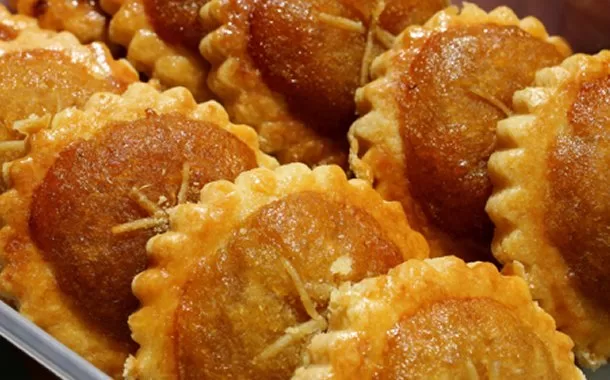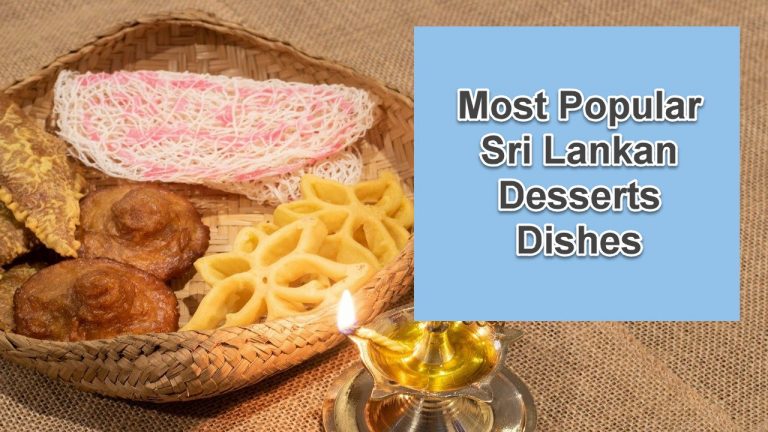6 Most Popular Indonesian Desserts Dishes

Simple, fresh, and easy to make, you are in for some treats with a traditional Indonesian dessert. Indonesian desserts are full of sweet, sumptuous flavors and beautiful colors. From sweet rice cakes to pineapple cookies and steamed cake, they are surely one of Southeast Asia’s most delicious traditional desserts.
Indonesian Desserts Dishes
Check out these Indonesian dishes and try to make some of its delicious recipes.

Kueh Lapis
It is a traditional cake built up of nine layers of rice pudding. This adorable cake has a wobbly and soft texture with a distinctive coconut milk flavor. This Indonesian dessert has colored layers that can be peeled back like a piece of string cheese or you can use a fork to eat them at once.
This is one of the favorite Indonesian desserts that is made of rice flour, along with tapioca flour to produce a soft, chewy, and bouncy texture. The secret to achieve the different layer of colors of this layered cake is to ensure that each layer is cooked prior to adding the next one.
How To Make Kueh Lapis
Ingredients:
- 300 ml coconut milk
- 150 gr granulated sugar
- ½ tsp vanilla extract
- 250 ml boiling hot water
- 180 gr tapioca flour
- 40 gr rice flour
- ⅛ tsp salt
Others:
- Red food coloring
- Green food coloring
- I used 5 x 5 x 3 inch pan see notes on different pan size
- measuring cup
Procedures:
- In a mixing bowl, combine coconut milk, sugar and vanilla extract. Stir well until well mixed.
- Pour the mixture in the boiling water.
- Stir in tapioca starch, rice flour, and salt. Mix well.
- Stir continuously until you achieve a smooth batter texture. To get rid of lumps, strain the batter.
- In separate bowls, distribute the batter into roughly three equal portions. Add your desired food coloring, about 300 ml each color.
- In each bowl, add about 1-2 drops of food coloring or more if you prefer to do so.
- Meanwhile, prepare the steamer by bringing water to a boil. Use a cloth to wrap on the lid. This will prevent condensation dripping back onto your steamed cake.
- Brush all sides of the pan and bottom lightly with cooking oil. Preheat it by steaming it empty over boiling water for 5 minutes.
- Before you ladle the batter on the pan, give it a good stir. This will prevent the flour from settling down at the bottom. Start with the color you want and pour about 100 ml of the batter into the pan.
- Adjust the heat to medium and don’t steam over high heat as the layer will wrinkle or the water will boil over. Steam the first layer for about 7 minutes.
- After 7 minutes, the layer should be set but you may see a bit of liquid pooling on top. Use a glove and swirl the pan to distribute that liquid and leave the lid open for 1 minute.
- Gently pour or ladle another layer on top but don’t pour it from a height, as it may damage the layer underneath.
- Keep it close and pour or ladle and check if you need to refill the water in your steamer. Never let it dry out. Repeat the process until you’re done up to 9 layers. After pouring the last layer, steam for 10 minutes. Turn off heat and remove the lead and let it sit for a minute or two, then remove it from the steamer.
- Let the cake cool down for up to 3 hours or longer before you attempt to remove the cake from the pan. Brush the top layer with a thin layer of oil once it cools down . Loosen the cake from the pan by using an oiled spatula or knife. You can also use it to cut the cake to prevent it from sticking.
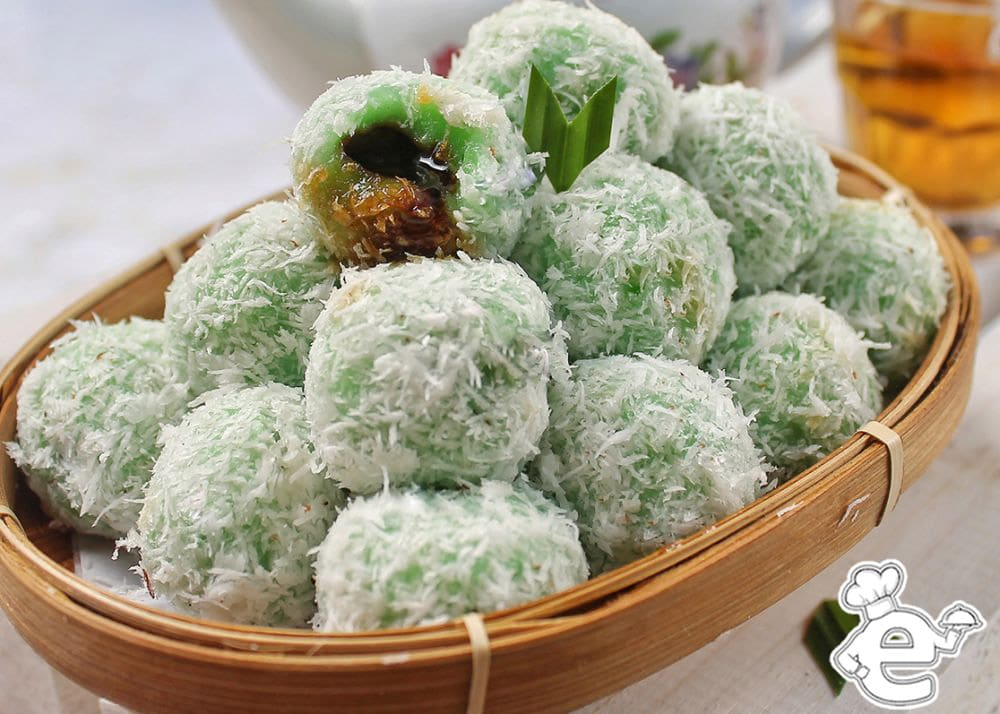
Indonesian Sweet Rice Cakes (Klepon)
Just like your favorite Indonesian dessert, Klepon or commonly known as Indonesian sweet rice cakes also uses rice flour as its primary component. These cute little treats have soft and flexible texture.
The chewy filling is made out of palm sugar to provide that sweet flavor. So that it doesn’t dry out, the dough should always be covered. There are a lot of flavors to choose from, but the most popular flavor will be pandan. If you can’t find it on Asian markets, try to check for alternatives online.
How to Make Klepon
Ingredients:
- 1 ½ cup of glutinous rice flour
- 1 cup of coconut milk
- ¾ cup of coconut grated, desiccated or shredded
- 1 tsp of pandan flavoring
- ¼ cup of palm sugar gula melaka/gula jawa, chopped into small pieces
- Pinch of salt
Procedures:
- To get a soft and fluffy shredded coconut, steam or thaw it. Once done, cover with a towel to keep moist until ready to use.
- Add the cup of coconut milk, teaspoon of pandan flavoring and pinch of salt in a small saucepan. Let it get on low heat for a few minutes and remove.
- Get a medium bowl and combine 1 and ½ cups of glutinous rice flour and warmed pandan coconut milk. Use a spoon to mix them and knead until it turns to a soft dough (best if flexible and pliable).
- Take a heaped teaspoon of the dough and roll it around into a ball shape. Place dough in a plastic bag to hold in the moisture and avoid it from getting dry.
- Make a hole by pushing an indent into the center of the balls. Stuff a piece of chopped palm sugar into it and close the dough over the hole. Pinch the dough back together, then roll it back into a ball using your palms. Repeat the process until they are ready to be cooked.
- In a large pot, boil some water. Once boiling, place the klepon into the pot. Put them in batches to avoid overcrowding. Once the dough floats to the top, it means it is already cooked. Remove those dough from the water with a slotted spoon once cooked. Cooking time may take around 10 to 15 minutes.
- Get your steamed bowl of coconut and roll around the klepon to coat them. You can use a fork to avoid sticking the klepon on your fingers.
- Let it cool before eating as the filling might be very hot.

Wajik
Wajik is a vegan and gluten-free rice cake that is also known as sticky rice in palm sugar. It is made with four ingredients that includes white sticky rice or glutinous rice flour, coconut milk, palm sugar, and pandan leaves.
This traditional Indonesian snack is perfect on a warm afternoon with a cup of Indonesian or bantrek. It has a grass-like taste with hints of vanilla, almond, and rose very distinct and is hard to replicate.
The best substitute if you can’t find any pandan leaves would be a pandan extract. Mix it with the steamed rice and sticky palm sugar glaze. Then mold it into a baking dish and let it cool completely before slicing.
Ingredients:
- 400 gram white sticky/glutinous rice, soaked for at least 2 hours or overnight
- 50 ml of hot water
- 250 ml of coconut milk
- 200 gram palm sugar, shaved or chopped to small pieces
- 3 pandan leaves, knotted
Procedures:
- On a medium high heat, prepare the steamer with at least 2 inches of water from the bottom of the pot. Use a kitchen towel/parchment paper riddled with small holes to line the steamer basket. They should be smaller than the size of the sticky rice.
- Place sticky rice in the steamer basket and steam them for 30 minutes. Sprinkle the rice with 50 ml of hot water after 30 minutes and continue the steaming process for another 30 minutes.
- Prepare a pot and boil coconut milk, pam sugar, and pandan leaves over medium heat. Reduce heat and simmer for 10 minutes while stirring occasionally to make sure that the palm sugar gets dissolved. Remove the pandan leaves and strain any impurities and put the mixture back to a large skillet/frying pan.
- Transfer the steamed rice into the skillet/frying pan with the palm sugar syrup and cook on low heat. Stir until the liquid is fully absorbed by the rice or until it is almost dry.
- Transfer the rice on a baking tray lined with parchment paper/saran wrap. Flatten the rice with a spatula by pressing it as best as you can. Let it cool at room temperature for about 1 to 2 hours.
- Get a chopping board that is bigger than the tray and flip the rice onto the cutting board. Cut the rice into different shapes, depending on your preferences.
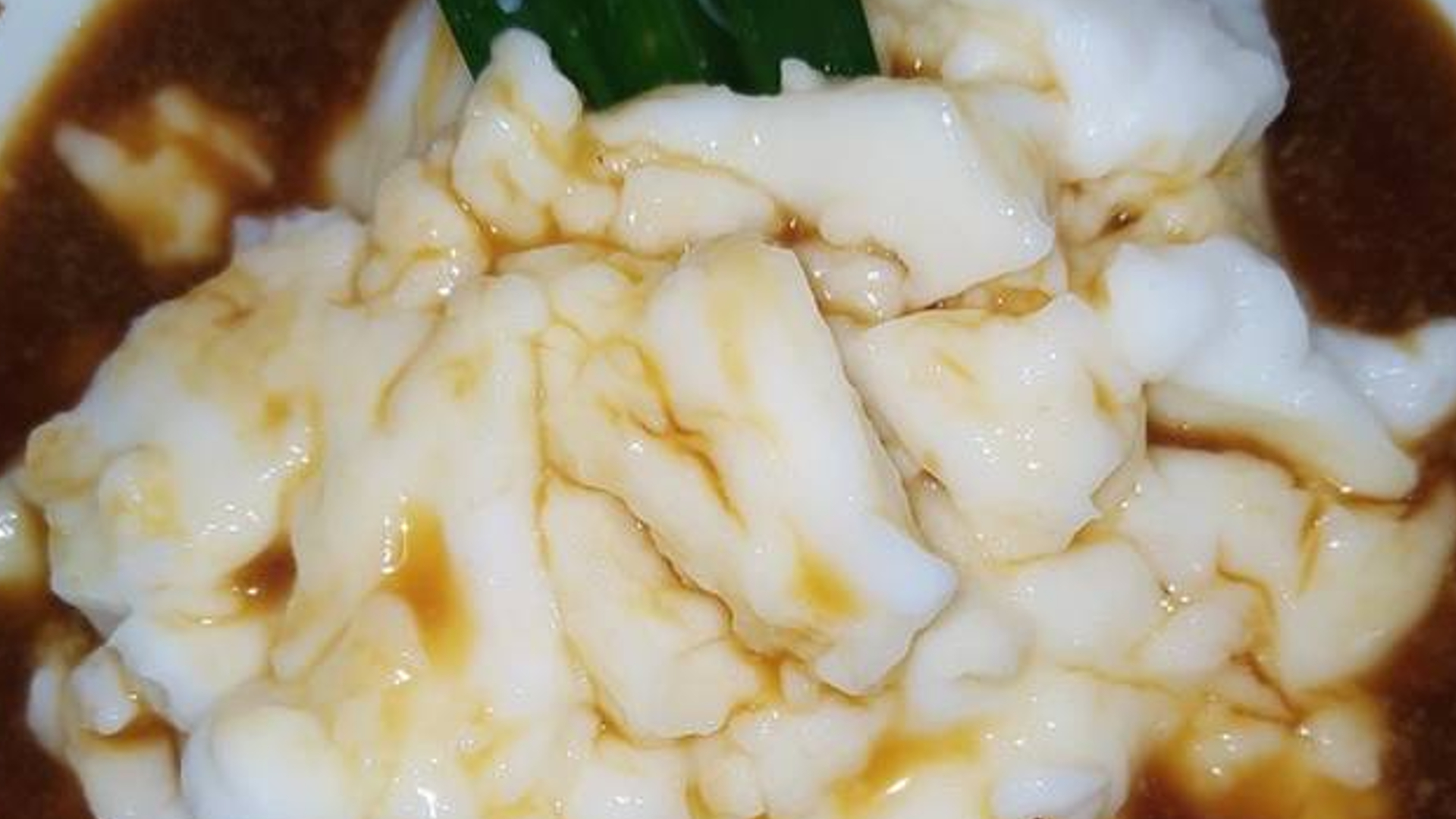
Bubur Sum-Sum
Made with coconut milk and rice flour, this Indonesian rice pudding is more like a coconut pudding. It can be a salty traditional snack but it is well-complemented with a heavy portion of palm sugar syrup. It can be served warm with the sauce poured over the top.
Other locals would serve it together in a bowl with bubur candil ubi jalar or dumplings made out of sweet potatoes. If you’re not that fond of eating a very sweet snack, check this as an alternative.
How to Make Bubur Sum-Sum
Ingredients:
For the Pudding:
- 100g of rice flour
- 1⁄2 teaspoon of salt
- 650 ml of coconut milk
- 2 pandan leaves, shredded
For the Sauce:
- 200g of palm sugar, shaved
- 50g of granulated sugar
- 250 ml of water
- 1 screwpine leaves
Procedures:
- In a bowl, mix the rice flour with half of the coconut milk and salt.
- Get a pot and boil the other half of coconut milk and pandan leaves.
- Pour in the rice flour batter into boiling coconut milk. Continue to cook and boil until the mixture has a thick cream texture.
- Meanwhile, prepare the sauce by boiling all of the sauce ingredients in a pot.
- Ladle the pudding into bowls, pour the sauce on top of the mixture. Serve warm.
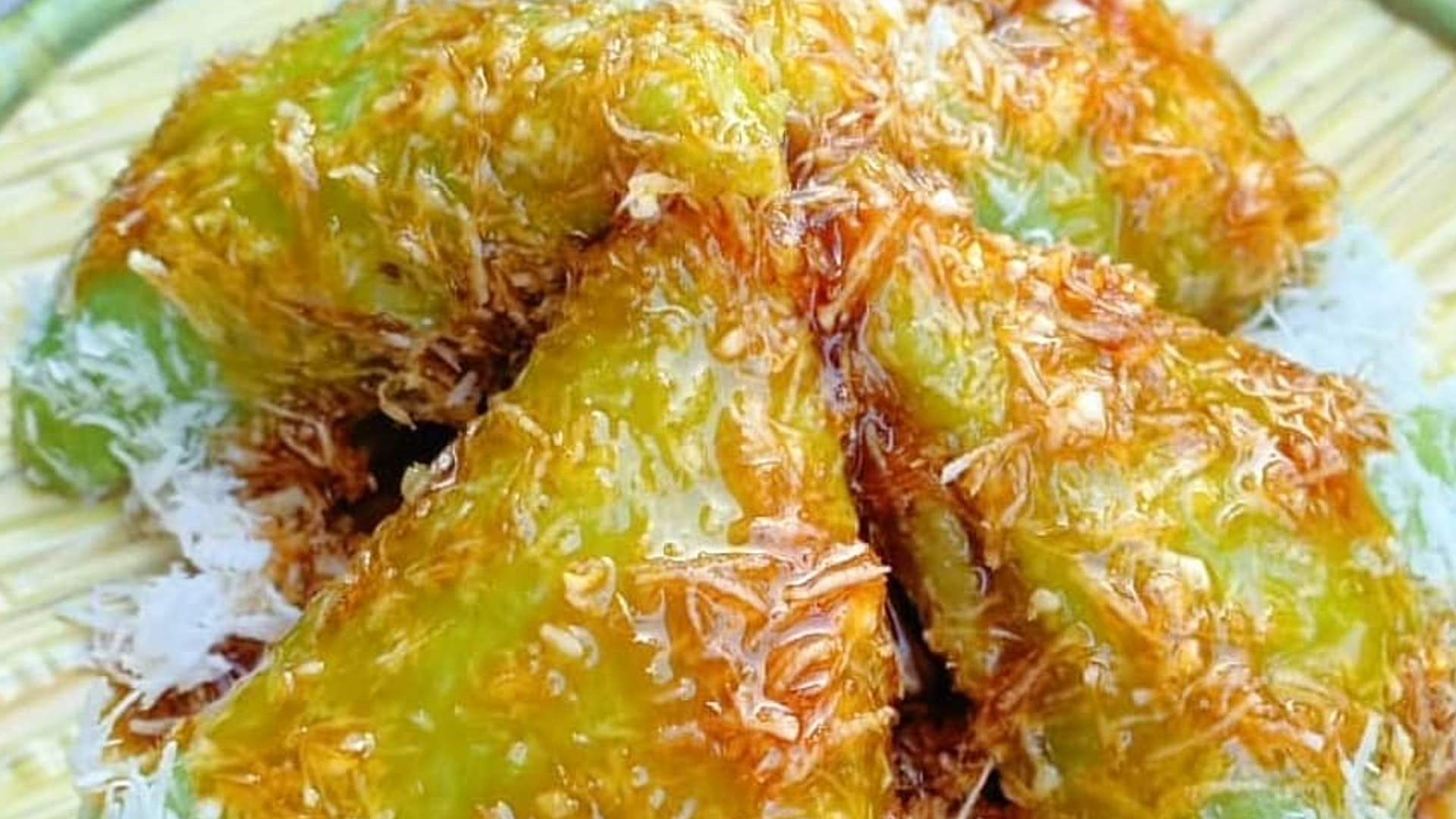
Kue Lupis
You might wonder if this Indonesian cuisine is related to Kueh Lapis. Kue Lupis are actually tender little dumplings or Indonesian sweet sticky rice dumplings to be exact. If you are looking for amazing treats for a light after-dinner snack, these delicious Indonesian desserts would be perfect.
The dumpling is made out of sticky rice, coated with grated coconut and then drizzled with palm sugar syrup. This gives it a sweet flavor and sticky texture. Banana leaves are commonly used to wrap the dumplings, but you can use a foil as an alternative if banana leaves aren’t available in the market.
How to Make Kue Lupis
Ingredients:
- 500g of sticky rice, washed, soaked in water overnight, rinsed
- 500 ml of water
- banana leaves
- 225g coconut, grated
- 1⁄4 of teaspoon salt
- 300g of palm sugar
- 3 tablespoons of granulated sugar
- 125 ml water
Procedures:
- Get 2 pieces of banana leaves and form them into triangular shapes. Put 1 tablespoon of sticky rice into the banana leaves, close it and secure it with ropes or toothpicks.
- In a large pot, bring the water to boil and put the banana leaves with sticky rice. Boil them for 3 hours until well cooked. Rinse and remove the leaves, then set aside and let it cool.
- In a separate pot, mix the grated coconut with salt. Steam for 10 minutes and set aside.
- Turn the palm sugar into a syrup mixture by combining palm sugar and granulated sugar with water. Boil the mixture until it thickens into a syrup form.
- Roll the sticky rice dumplings over the grated coconut. Arrange on small plates and pour the syrup on top.
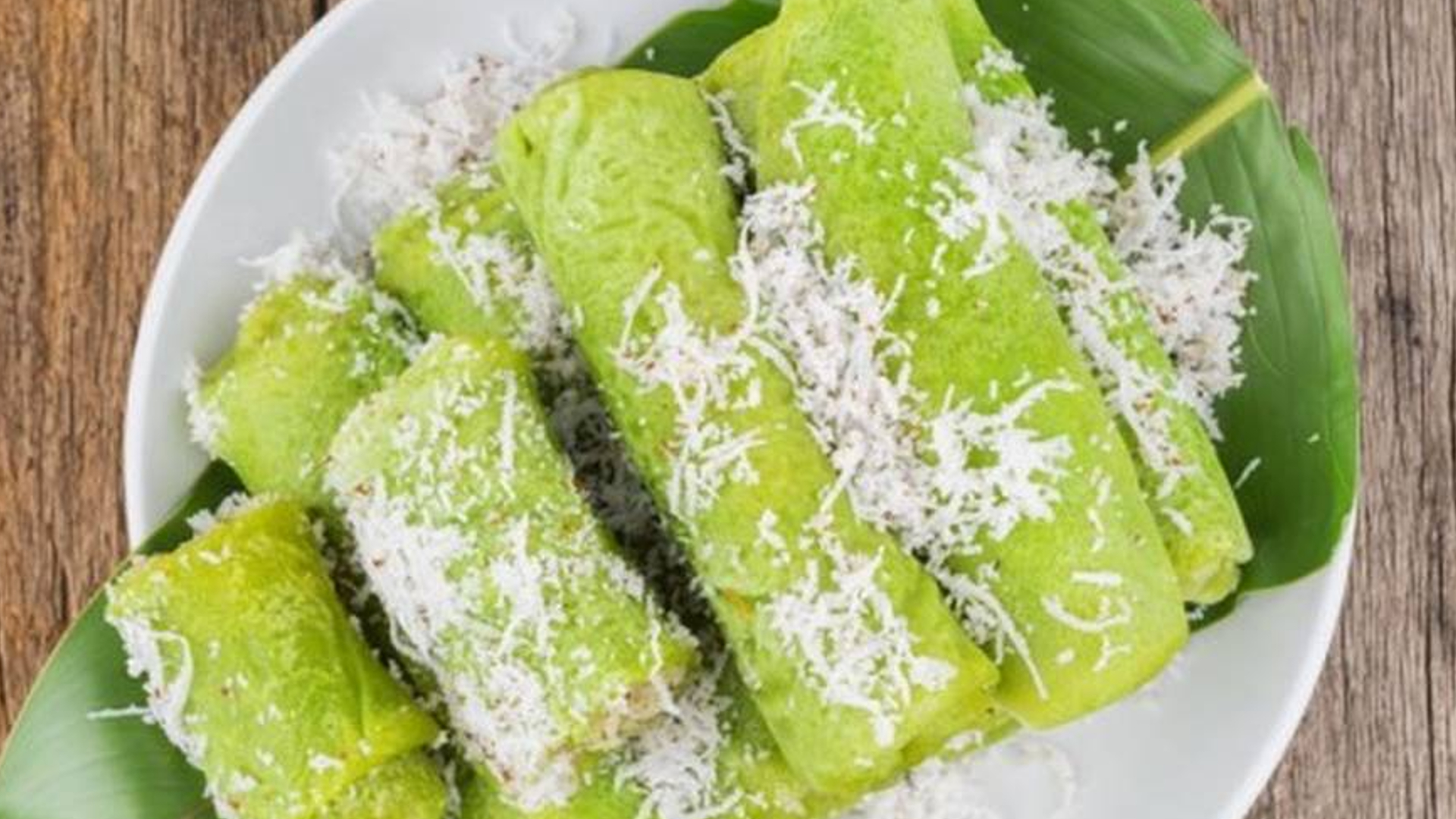
Kue Dadar Gulung
If you describe this one of the popular Indonesian desserts, it is a coconut filled pancake. Being a popular street food, it can be found all over Indonesia. It has an attractive green appearance because of the added pandan syrup ingredient.
Kue Dadar Gulung is best made on the day you’ll be eating them, but you can prepare its batter and filling two days ahead if you prefer to do so. The ingredients would be bleached or unbleached all-purpose flour, eggs, pandan juice or pandan syrup, coconut milk, grated coconut, coconut sugar, and pandan leaves.
Other Indonesian Desserts
There are a lot of different Indonesian desserts that you can explore and recreate on your own. There is the famous Nagasari which is a banana and coconut custard. You can also get the simple yet tasty Pisang Goreng or Indonesian Fried Banana.
Various regions in Indonesia that offer different treats to cater your palate. If you visit the country one day, make sure to check them out or at least give them a try.
